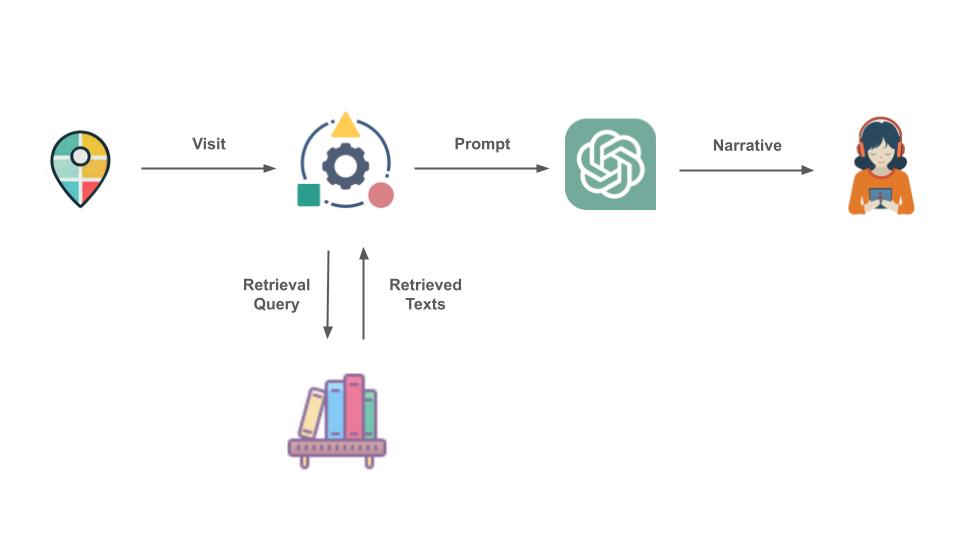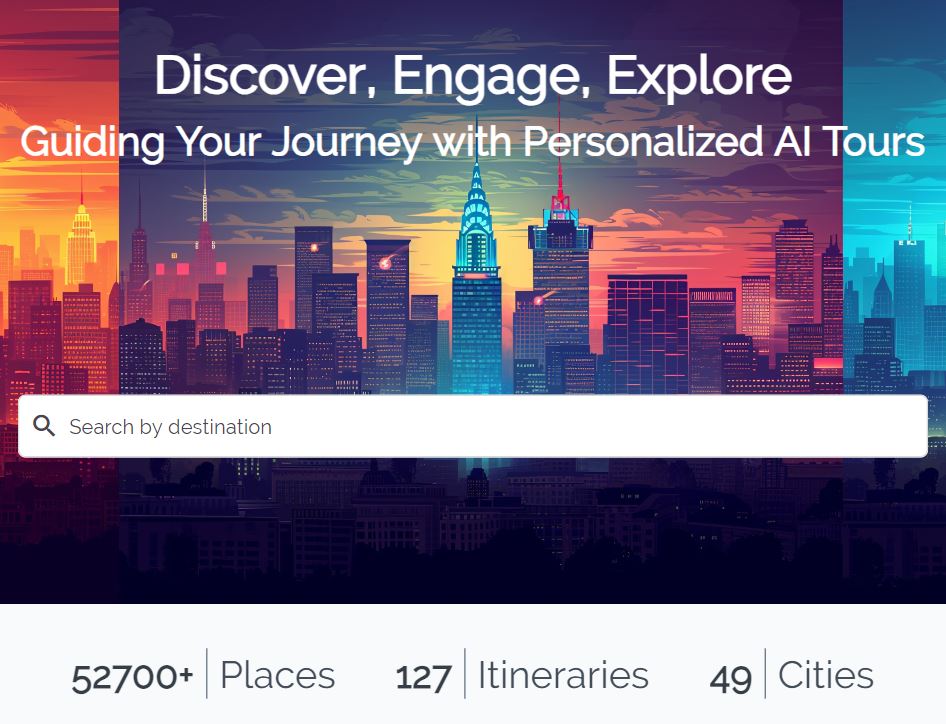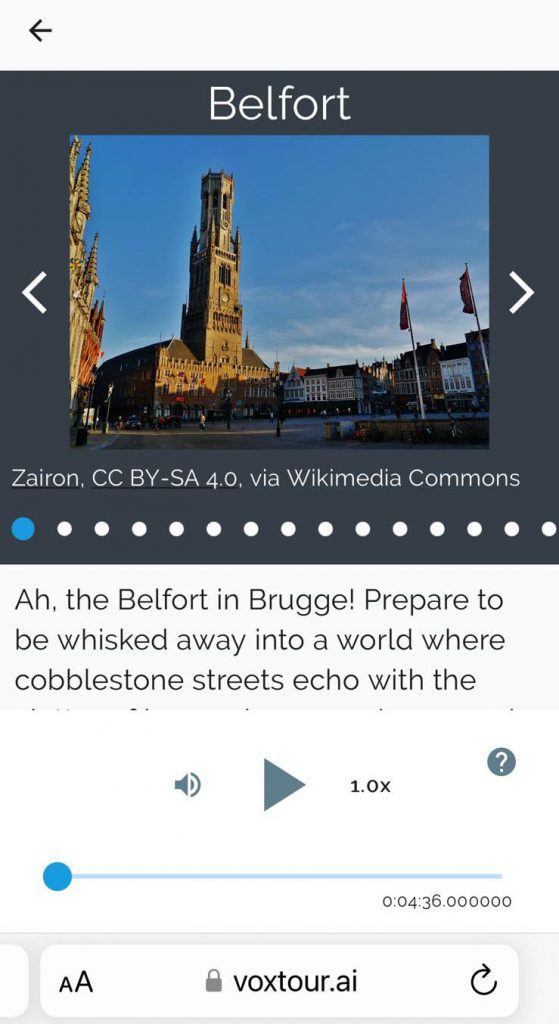I was recently asked whether using ChatGPT alone is sufficient compared to an AI-powered application for self-guided tourism, and I’d like to share some thoughts on this topic.
Modern AI technologies can greatly simplify self-guided tours, but it’s important to recognize that ChatGPT alone isn’t sufficient yet. This is because large language models (LLMs) aren’t good enough at directly handling tasks such as geolocation, object identification, and routing. Location identification and object recognition are better handled by specialized services like Google Cloud Vision, while geolocation and routing are best managed by solutions like OpenStreetMap (OSM) and Google Maps. Simple text planning alone won’t address these tasks without integrating tools that can accurately display routes and points of interest on a map.
Creating an itinerary – a sequence of points of interest – for a self-guided tour using an LLM isn’t currently effective at a satisfactory level. Relying solely on a language model for this task can lead to issues like suboptimal routes, missing key attractions, and inaccurate location mapping. Language models aren’t equipped to optimize travel paths or effectively understand maps and distances, which are crucial for planning an efficient and enjoyable tour.

Storytelling with an LLM is often suboptimal without specialized enhancements. Techniques like fine-tuning models, utilizing Retrieval-Augmented Generation (RAG) with up-to-date data, and crafting complex prompts that mimic a professional guide’s work are necessary for better results. Extracting user interests from context can be challenging, leading to less relevant or personalized recommendations. To achieve high-quality storytelling, it’s important to use specially tuned AI capable of creating more precise and meaningful narratives.
Generated audio descriptions can significantly enhance the user experience, making tours more engaging and accessible. While ChatGPT now offers a form of audio conversation, it’s not the same as the specialized audio guides used in self-guided tourism. ChatGPT’s audio features focus on interactive dialogue, requiring constant user input and lacking the structured, location-specific narratives that enrich a tour. In contrast, AI-generated audio guides are designed to provide immersive, pre-planned storytelling tailored to each point of interest. They seamlessly blend factual information with engaging narratives without the need for continuous interaction. AI enables the creation of high-quality audio guides that not only convey facts but also tell stories in an interactive and captivating format specifically crafted for tourism.
Including a set of images for each point of interest (POI) allows for better orientation during the tour. This helps users easily match real-world objects with information in the app, making the tour more visually understandable and convenient. It’s also a valuable tool during the planning phase, helping users visualize the tour in advance and make informed decisions about their route and desired stops.
Questions related to the logistics of a tour – such as finding cafes or restaurants, museum and attraction hours, ticket prices, etc. – are not yet within the scope of LLM capabilities. While an LLM might attempt to answer these queries, it’s unwise to rely on the accuracy of the data. For up-to-date information, it’s better to use Google Maps or similar services

We are striving to address all these aspects, and more, in our app, VoxTour.ai. We integrate AI capabilities for narration, audio descriptions, precise geolocation, and image sets for each point of interest to create the most convenient and engaging experience for users on self-guided tours.
Announce
We’re pleased to introduce the first part of our series, From Van Eyck to Van Dyck: A Journey Through Flemish Art in Bruges, focusing on the lives and works of Flemish artists.

This new Bruges tour takes you through key landmarks such as the Groeninge Museum and the Basilica of the Holy Blood, where artists like Jan van Eyck, Hans Memling, and Anthony van Dyck left their mark on the city. Discover how these masters shaped the art world during the Northern Renaissance and Baroque periods.
This is just the beginning. The series will continue in Antwerp and Ghent, where we’ll explore more of Flanders’ rich artistic heritage.
And as usual, all our community tours are forever free!
For more information, check out the group Free Self-Guided Audio Tours Worldwide

